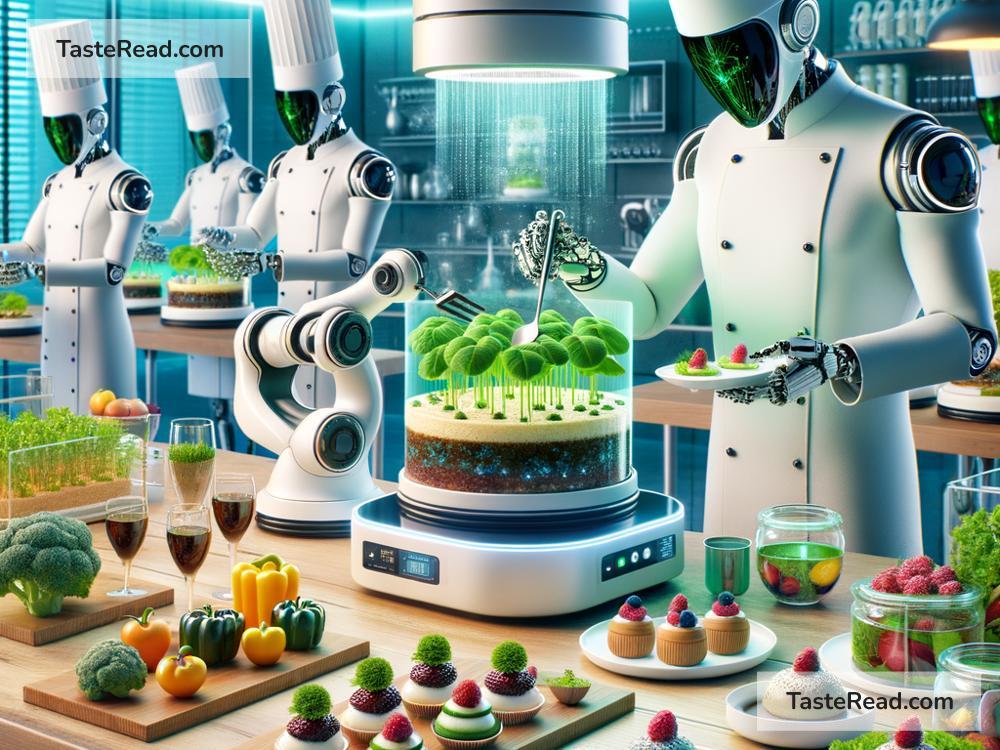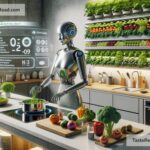The Future of Food: How Technology is Disrupting What We Eat
Food is one of the most important things in our lives. It keeps us healthy, fuels our energy, and brings people together. But as our world changes, so does the way we grow, produce, and eat food. With technology advancing faster than ever, the future of food is undergoing a massive transformation. From lab-grown meat to vertical farming, innovations are reshaping the way we think about what’s on our plates. In this blog, we’ll explore how technology is disrupting the food industry and what the future might look like.
Why Change is Needed in Food Production
Today, the global food system faces big challenges. The Earth’s population is growing quickly, with estimates suggesting we’ll reach nearly 10 billion people by 2050. Feeding billions of people is no small task, especially when we consider limited resources like land and fresh water.
At the same time, traditional farming methods can be harmful to the planet. Agriculture contributes to deforestation, greenhouse gas emissions, and the loss of biodiversity. Plus, climate change is making it harder for farmers to grow crops. Droughts, floods, and unexpected weather patterns disrupt food production, often causing shortages and higher prices.
Our current food system also has issues with waste. According to the Food and Agriculture Organization (FAO), almost one-third of all food produced globally is wasted. This waste not only harms the environment but also means millions of people are going hungry while perfectly good food is thrown away.
Clearly, we need better, more sustainable ways to produce food. That’s where technology comes in.
Technological Disruptions in Food
The food industry is undergoing exciting changes, thanks to technological innovation. Here are some transformative ideas that are shaping the future of food:
1. Lab-Grown Meat
One of the biggest disruptions in food technology is lab-grown meat, also known as cultured meat. Instead of raising animals for slaughter, scientists grow meat directly from animal cells in a lab. This process uses fewer resources like land and water, and it creates much less pollution.
Lab-grown meat offers a promising solution to many ethical and environmental concerns. No animals need to be harmed, and the carbon footprint of producing meat in a lab is far smaller than traditional farming. While lab-grown meat is still expensive today, companies are working hard to scale up production and make it affordable for everyone.
2. Vertical Farming
Another exciting idea is vertical farming. Traditional farms spread out across fields, which require a lot of space. But vertical farms stack plants on shelves inside buildings, creating a farm that grows upwards instead of outwards. These farms use advanced technologies like LED lights and automated irrigation systems to grow food efficiently.
Vertical farming saves space, uses less water, and can grow crops year-round. Because vertical farms are located indoors, they’re not affected by bad weather. Some companies are even building vertical farms in cities, bringing fresh produce closer to consumers and reducing transportation costs.
3. Plant-Based Proteins
More people are switching to plant-based diets, and technology is helping create alternatives to traditional meat. Companies like Beyond Meat and Impossible Foods use science to replicate the taste and texture of real meat using plants. These innovations give consumers more sustainable and ethical food choices.
Plant-based proteins also take up fewer resources to produce compared to animal agriculture. As demand for alternative proteins grows, we’ll likely see more options on grocery shelves in the years ahead.
4. Food Delivery Robots and Automation
The way we get our food is also changing. Delivery robots and drones are starting to appear in cities, bringing meals and groceries straight to your door. These technologies could make food delivery faster and more affordable for consumers.
Automation is also transforming restaurants and food production. From robotic chefs to machines that pick fruits in fields, automation reduces labor costs and increases efficiency.
The Challenges Ahead
While food technology has tremendous potential, it also comes with challenges. For example, some people worry about the safety and ethics of lab-grown meat or genetically modified foods. Governments will need to regulate these innovations to make sure they’re safe for consumers and the environment.
Cost is another concern. Many of these technologies are still expensive to develop, and it might take time before they’re affordable for everyone. We need solutions that work not just for wealthy countries but for poorer regions where food insecurity is a major issue.
And finally, there’s the human aspect. Food is more than just fuel for our bodies—it’s intertwined with culture, traditions, and identity. Some people might resist changes to the way food is produced because it feels unfamiliar or unnatural. It’s important to balance innovation with respect for cultural values and practices.
What the Future Looks Like
The future of food is bright and full of possibilities. Technology is helping us find smarter, more sustainable ways to produce food while reducing harm to the planet. We may see lab-grown steaks at fancy restaurants, vertical farms in bustling cities, and plant-based burgers at every drive-thru.
As exciting as these changes are, the future of food will depend on how we, as a society, approach these innovations. Collaboration between scientists, businesses, governments, and consumers will shape what the food industry looks like in the years to come.
What’s clear is that food will remain a central part of our lives—but it may look very different from what we’re used to. And who knows? Maybe one day we’ll even be eating meals designed specifically for space travel or Mars exploration. The possibilities are endless!
In the end, technology is not just changing the way we eat—it’s redefining what’s possible. Whether it’s lab-grown meat or robotic delivery, the future of food promises to be healthier, more ethical, and kinder to the planet. So, the next time you sit down for a meal, consider the incredible journey food might take to get to your table in the years to come.


